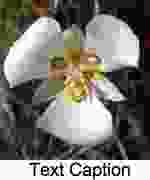Compression artifacts are noticeable distortions of the image , sound , video caused by lossy compression .
If the compressor, in the case of lossy compression, cannot correctly reproduce information from the compressed version, distortions appear.
For example, JPEG and MPEG compression artifacts with a large compression ratio are rectangular fields of the same color, which can take on a fairly large size in monochrome areas of the image. They also reduce clarity .
For MP3 audio , the greater the distortion, the lower the sampling rate and bit rate .
Minimizing perceived artifacts is a key objective when implementing a lossy compression algorithm. However, artifacts are sometimes intentionally created for artistic purposes, such as in glitch art .
From a technical point of view, a compression artifact is a special class of data errors that usually results from quantization of lossy data compression. Where used, they usually take the form of one of the basic functions of the encoder transform space.
Images

Original image with good color transition

Loss of sharpness at color borders, general blur, noise ghosting around sharp edges when using JPEG with high compression ratios
JPEG compression artifacts. The compression ratio increases from right to left.
JPEG compression artifacts
When performing block coding for quantization , as in JPEG- compressed images, several types of artifacts may appear:
- block distortion
- the waves
- rings
- noise around the edges , blur
Video
When motion prediction is used, as in MPEG-1 , MPEG-2 or MPEG-4 , compression artifacts, as a rule, remain in several generations of decompressed frames and move with the optical image stream , which leads to a peculiar effect, a cross between the drawing effect and dirt that moves with objects.
Data errors in the compressed bit stream , possibly due to transmission errors, can lead to errors like large quantization errors , or can completely disrupt the analysis of the data stream for a short time, which leads to image “decay”. When gross errors occur in the bitstream, decoders continue to apply updates to the damaged image for a short period of time, creating a “ghost” effect, until the next independently compressed frame is received.
See also
- Lossless compression
- Lossy data compression
- Image compression
- Standard Test Image
- Digital image
- Image processing
- Digital image noise
- Image scaling
Notes
Literature
- Kai-Chieh Yang. Perceptual Quality Assessment for Compressed Video , 2007. Chapter 2.2.1 "Compression Artifacts" pages 26-31
- J. Miano. Formats and image compression algorithms in action. - M .: Triumph Publishing House, 2003 .-- 336 p. ISBN 5-89392-078-3
- D. Salomon. Compression of data, images and sound. - M .: Technosphere, 2004 .-- 368 p. ISBN 5-94836-027-X
- D.S. Vatolin. Image Compression Algorithms. Toolkit. - Publishing Department of the Faculty of Computational Mathematics and Cybernetics of Moscow State University named after MV Lomonosov, 1999. - 76 p. ISBN 5-89407-041-4
- Vatolin D., Rakushnyak A., Smirnov M., Yukin V. Data compression methods. The device archivers, image and video compression. - M .: DIALOGUE-MEPhI, 2003 .-- 384 p. ISBN 5-86404-170-X
Links
- How to improve image quality in jpg format (rus.)
- How to compress video (rus.)
- JPEG Artifacts
- Glossary: Artifacts: Digital Photography Review
- Blocking artifacts Definition from PC Magazine Encyclopedia
- Video compression artifacts and MPEG noise reduction
- FAQ on digitizing video at the lowest cost (Russian)
- Video compression and decoding: how and what is better (Russian)
- About video compression - Introduction / Geek magazine

